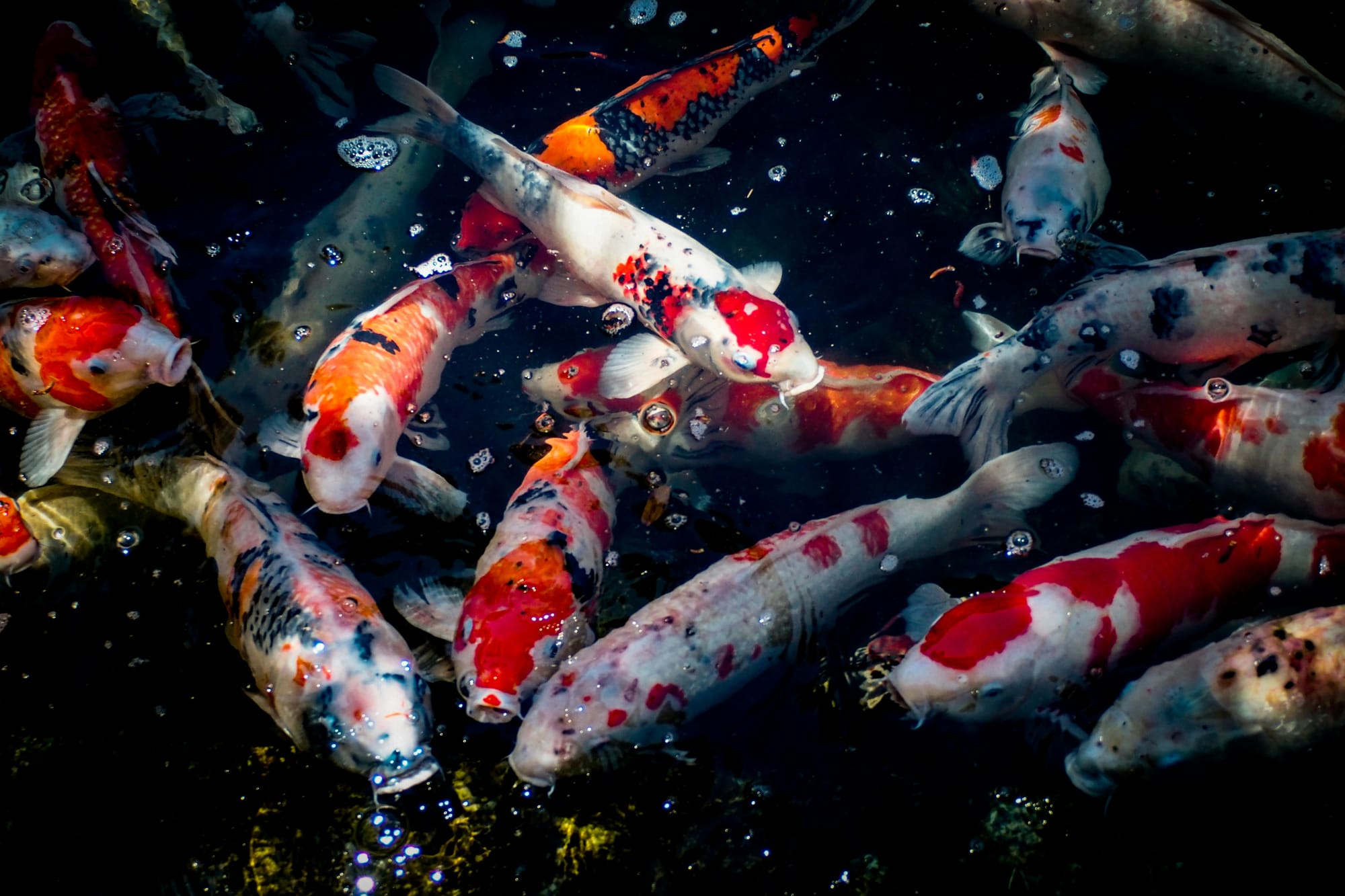Koi in Japan: A Symbol of Beauty, Culture, and Resilience

Koi, or "nishikigoi" as they are known in Japan, are much more than just ornamental fish. These vibrant and graceful creatures hold deep cultural significance and have a storied history that intertwines with Japanese art, tradition, and philosophy. Revered for their beauty, koi have become an iconic symbol in Japan, representing perseverance, strength, and the harmonious relationship between humanity and nature.
The Origins of Koi in Japan
The origins of koi in Japan date back over a thousand years, with the earliest references to carp, the ancestor of the modern koi, appearing in ancient Chinese texts. The Japanese began importing carp from China around the 8th century, primarily for their hardiness as a food source. Over centuries, particularly during the Edo period (1603-1868), selective breeding began to play a key role in transforming these plain, dark-colored carp into the multicolored, ornamental koi we know today.
Farmers in the mountainous region of Niigata, where rice farming was a primary livelihood, were among the first to engage in this practice. During the winter months, when farming was impossible, these farmers turned to breeding carp in the flooded rice paddies. The fish began to develop mutations, resulting in various colors and patterns. Recognizing the aesthetic potential, the farmers selectively bred these colorful carp, leading to the creation of distinct varieties of koi.
The Cultural Significance of Koi
Koi are deeply embedded in Japanese culture and are often associated with various symbolic meanings. One of the most powerful symbols attached to koi is that of perseverance and strength. According to Japanese legend, koi are known for swimming upstream and even climbing waterfalls, a behavior that has been romanticized in folklore. The koi's journey against the current symbolizes determination and the ability to overcome adversity, embodying the spirit of perseverance.
This symbolism is often depicted in the form of the koi being transformed into a dragon after overcoming a particularly difficult waterfall, a story rooted in Chinese mythology. The image of a koi transforming into a dragon is emblematic of triumph and success achieved through hard work and perseverance.
Koi are also associated with luck and prosperity. In Japanese culture, they are often kept in ponds and gardens as symbols of good fortune. Each koi variety carries its own unique symbolism. For instance, the Kohaku, a white koi with red markings, represents success in the career path, while the Asagi, with its blue scales, is said to bring calm and tranquility.
The Art and Aesthetics of Koi
Koi are not just admired for their symbolism; they are also celebrated for their aesthetic beauty. The art of koi breeding, known as "nishikigoi," has evolved into a highly specialized practice, with breeders striving to create fish with the most desirable patterns, colors, and body shapes. The palette of a koi includes shades of red, orange, yellow, black, blue, and white, and their patterns can range from simple and elegant to intricate and complex.
Judging koi is a serious and respected practice in Japan, with competitions held annually to determine the most beautiful and perfectly bred fish. The criteria for judging include the vibrancy and clarity of the colors, the symmetry and definition of the patterns, the shape and proportion of the body, and the overall health and vitality of the fish. The most prized koi can fetch extraordinary prices, with some selling for hundreds of thousands of dollars.
Koi are also a recurring motif in Japanese art, from traditional paintings and woodblock prints to contemporary designs and tattoos. Their graceful form and rich symbolism make them an enduring subject for artists seeking to capture the essence of Japanese culture.
Koi Ponds: A Harmonious Blend of Nature and Art
Koi ponds are a quintessential element of traditional Japanese gardens, designed to create a sense of tranquility and balance. The design of a koi pond is a meticulous art form, reflecting the principles of Zen Buddhism and the aesthetic concept of "wabi-sabi," which finds beauty in imperfection and transience.
A well-designed koi pond is not just a home for the fish but a carefully curated ecosystem that promotes harmony between the koi, the water, and the surrounding environment. The placement of rocks, plants, and water features is all carefully considered to create a space that is both beautiful and conducive to the health and well-being of the koi.
In Japanese culture, koi ponds are often seen as a place of meditation and reflection, where one can find peace and inspiration by observing the graceful movements of the fish. The serene ambiance of a koi pond, combined with the symbolic presence of the koi, creates a space that embodies the Japanese appreciation for nature and the deep connection between the natural world and human life.
The Global Impact of Japanese Koi
While koi hold a special place in Japanese culture, their influence has spread far beyond Japan's borders. Today, koi are cherished worldwide, with enthusiasts in countries as diverse as the United States, China, and the United Kingdom. International koi competitions draw participants and spectators from around the globe, and the practice of koi breeding has been adopted by many, although Japan remains the undisputed leader in producing the highest-quality koi.
Koi have become a global symbol of beauty, perseverance, and the harmonious relationship between humans and nature. Their presence in gardens, art, and culture around the world speaks to the universal appeal of these remarkable fish and the enduring influence of Japanese culture.
Conclusion
Koi in Japan are more than just fish; they are a cultural treasure, a symbol of resilience and beauty, and a living embodiment of Japanese values and aesthetics. From their humble beginnings in the rice paddies of Niigata to their revered status in art and culture, koi have traveled a long and storied journey. Today, they continue to inspire and captivate, not just in Japan but across the world, as a symbol of perseverance, harmony, and the timeless beauty of nature.

